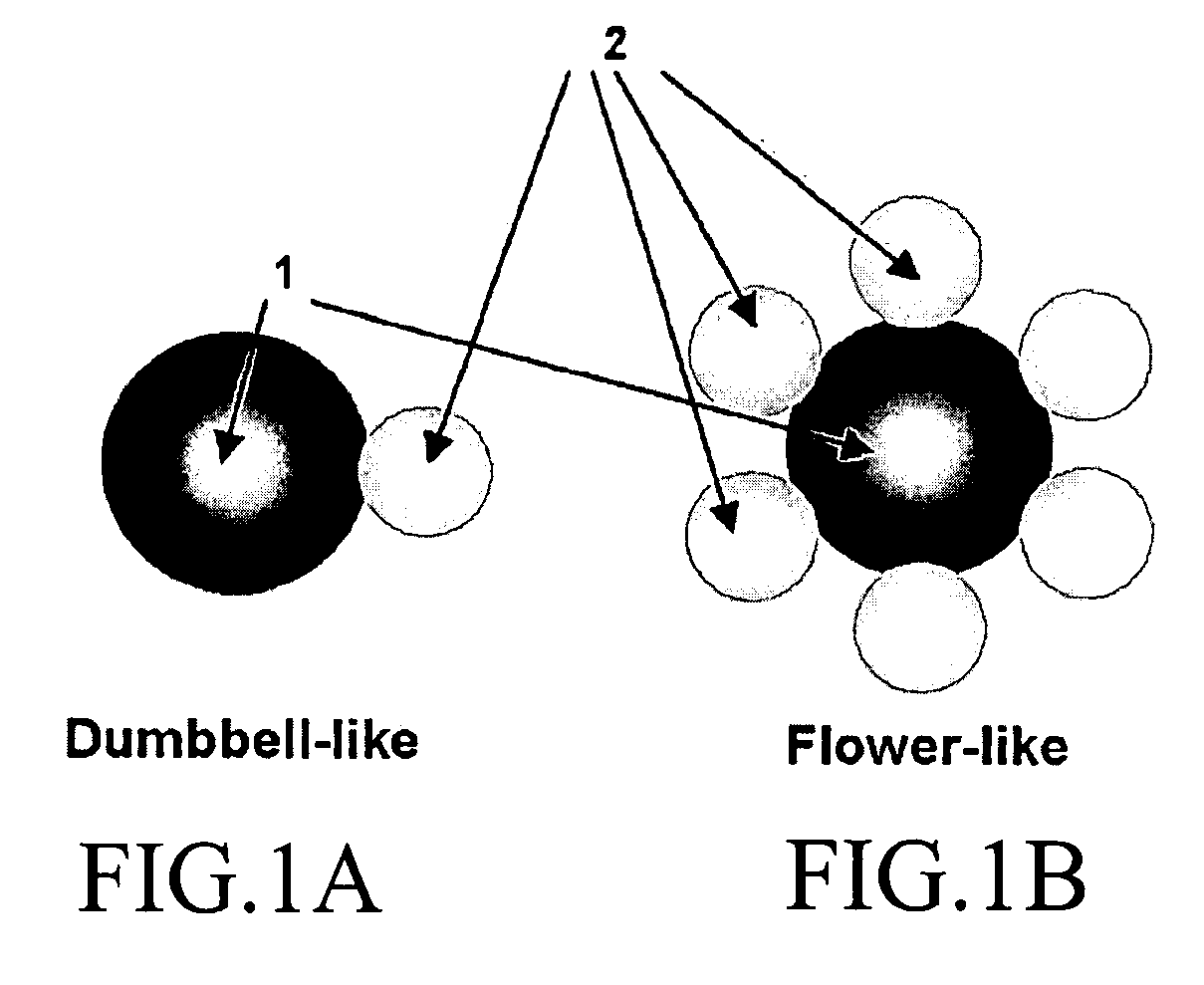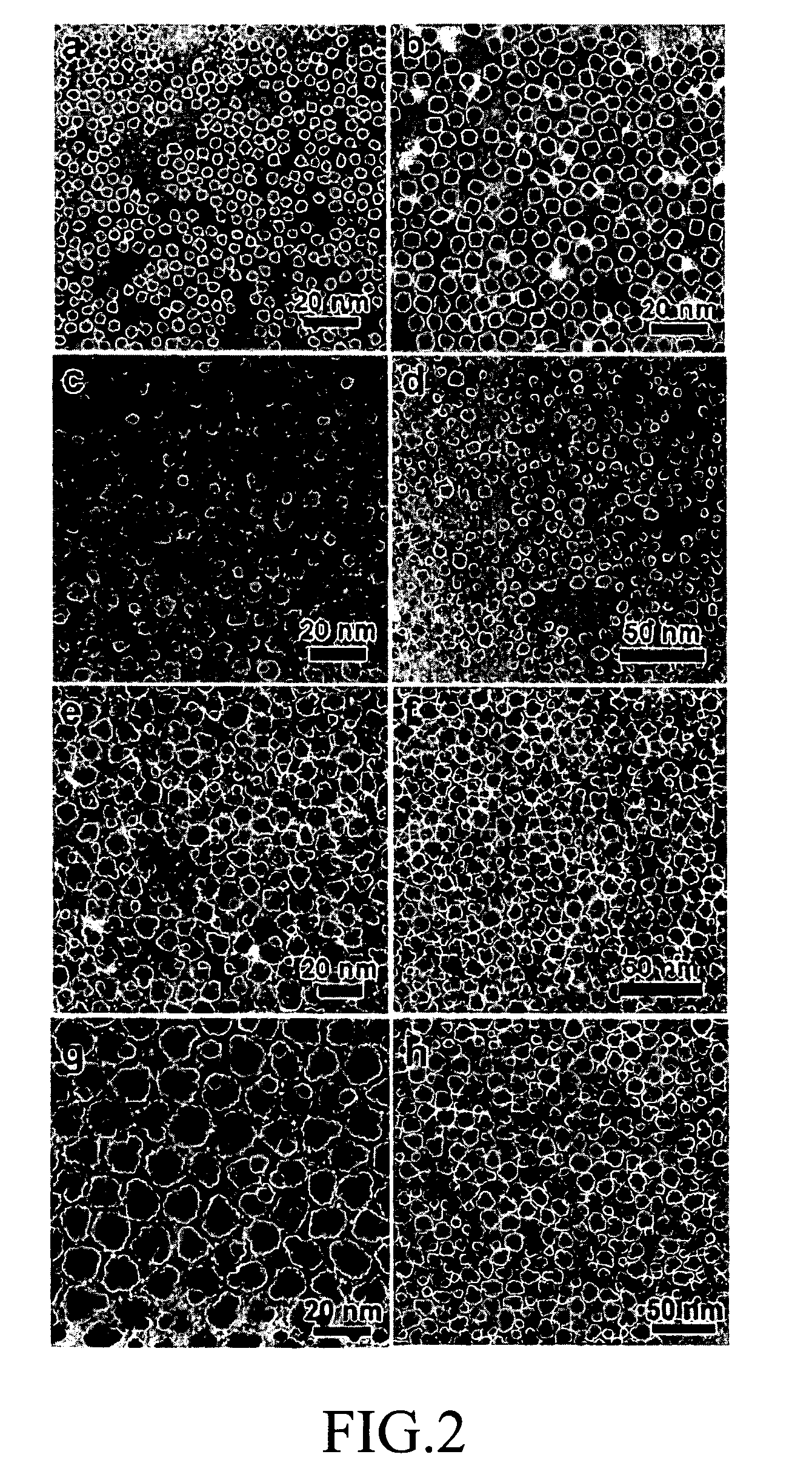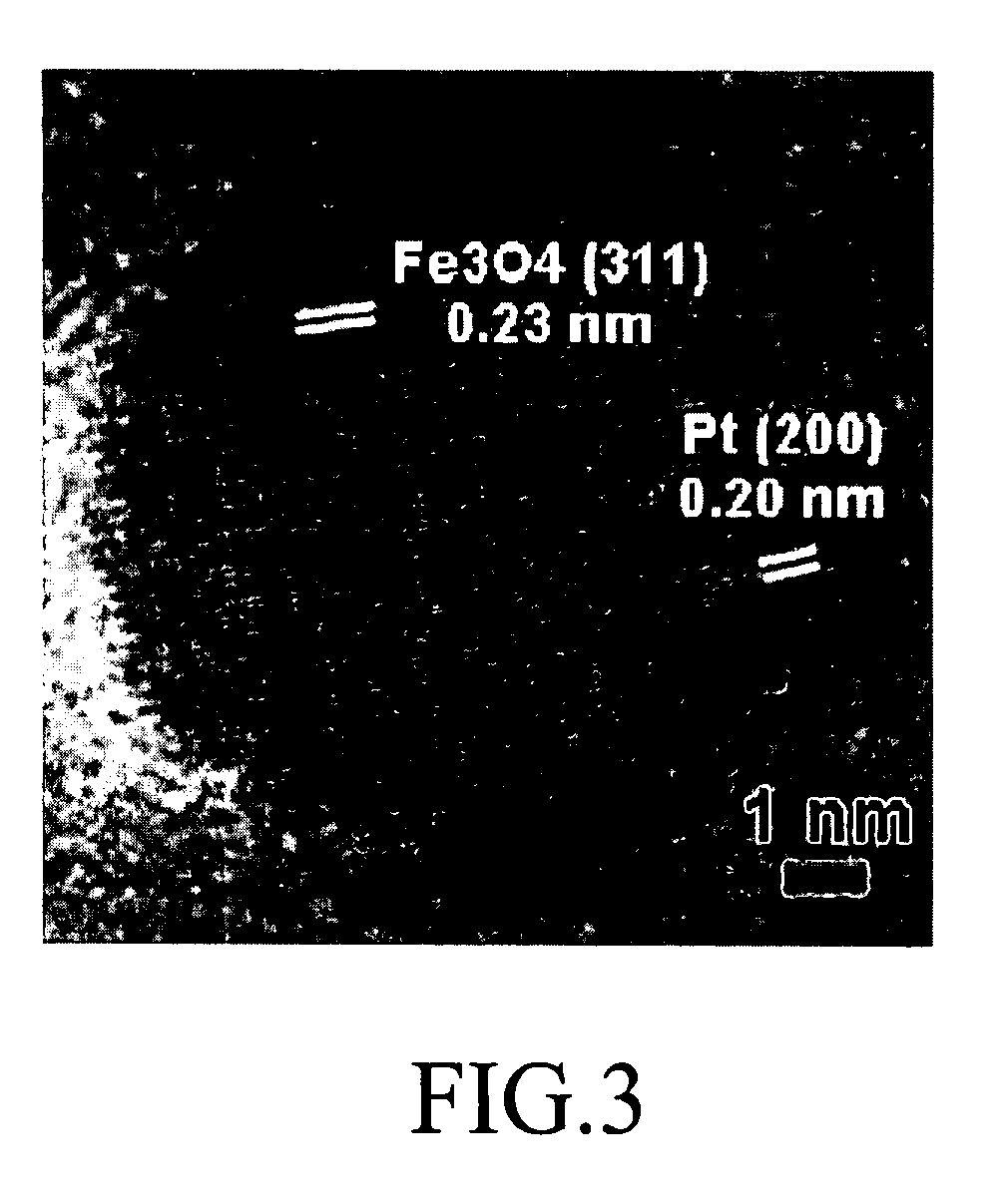Fuel cell, membrane electrode assembly
a technology of membrane electrodes and fuel cells, applied in the direction of cell components, physical/chemical process catalysts, sustainable manufacturing/processing, etc., can solve the problems of limited location of dams, depletion of resources, and environmental pollution, and achieve the effect of reducing catalyst costs
- Summary
- Abstract
- Description
- Claims
- Application Information
AI Technical Summary
Benefits of technology
Problems solved by technology
Method used
Image
Examples
example 1
Preparation of a Dumbbell-Like Composite Nanoparticle Catalyst Without Using Nanoparticle Seeds in the Synthesis
[0057]20 ml octadecene, 10 mmol (2.3 g) 1,2-tetradecanediol, 6 mmol (1.92 ml) oleic acid and 6 mmol oleylamine (2.04 ml) are mixed and degassed at 393 K under nitrogen flow for 30 min. 1 mmol (0.14 ml) Fe(CO)5 is added into this hot solution. After 5 min, 0.5 ml oleylamine (70%, Aldrich) is added and a Pt precursor made by dissolving 0.1 mmol H2PtCl6.6H2O (52 mg, Strem) in 5 ml octadecene in the presence of 0.5 ml oleylamine (70%, Aldrich) is injected into the solution at 393 K. The resulted solution is heated to reflux at 583 K and kept in reflux for 30 min. and then cooled down by removing the heating mantle. 50 ml absolute ethanol is added to precipitate the product, which is followed by centrifugation (6000 rpm, 10 min.). The precipitated nanoparticles are dispersed into hexane and washed by ethanol for another two times. The final product is dispersed in 15 ml hexane....
example 2
Preparation of a Dumbbell-Like Composite Nanoparticle Catalyst With Using Nanoparticle Seeds in the Synthesis
[0058]A mixture of 10 ml benzyl ether and 10 ml oleylamine is heated to 523 K under nitrogen flow. 0.2 ml trioctylphosphine is added to this hot solution, followed by 0.5 g Pt(acac)2 dispersed in 2 ml benzyl ether and 2 ml oleylamine. The resulted solution is kept at 523 K for another hour and then cooled down by removing the heating mantle. 50 ml absolute ethanol is added to precipitate the product, which is followed by centrifugation (6000 rpm, 10 min.). The precipitated nanoparticles are dispersed into hexane and washed by ethanol for another two times. The final product is dispersed in 15 ml hexane. 20 ml octadecene and 1 ml oleic acid are mixed and degassed at 393 K under nitrogen flow for 30 min. 1 mmol (0.14 ml) Fe(CO)5 is added under nitrogen blanket. After 10 min., 1 ml oleylamine is added and 20 mg Pt seeds (2 ml hexane dispersion, 10 mg / ml) is injected to this hot ...
example 3
Preparation of Anode Catalyst
[0059]1.69 mmol Pt(acac)2, 1.69 mmol Ru(acac)3 and 1.69 mmol NaPH2O2.H2O were dissolved into 200 ml ethylene glycol. 200 ml ethylene glycol containing 0.5 g carbon black was added to the ethylene glycol solution. 0.05 mol / l sulfuric acid solution was dropped, and the pH value of the solution was adjusted to 3 by using a pH litmus paper. Under nitrogen gas atmosphere, the solution was, mechanically stirred and refluxed for 4 h at 473 K to deposit PtRuP catalyst on the carbon black. After the reaction ends, filtration, washing, and drying were performed. A TEM image of the final product is in FIG. 7.
PUM
| Property | Measurement | Unit |
|---|---|---|
| particle size | aaaaa | aaaaa |
| particle size | aaaaa | aaaaa |
| acid resistant | aaaaa | aaaaa |
Abstract
Description
Claims
Application Information
 Login to View More
Login to View More - R&D
- Intellectual Property
- Life Sciences
- Materials
- Tech Scout
- Unparalleled Data Quality
- Higher Quality Content
- 60% Fewer Hallucinations
Browse by: Latest US Patents, China's latest patents, Technical Efficacy Thesaurus, Application Domain, Technology Topic, Popular Technical Reports.
© 2025 PatSnap. All rights reserved.Legal|Privacy policy|Modern Slavery Act Transparency Statement|Sitemap|About US| Contact US: help@patsnap.com



